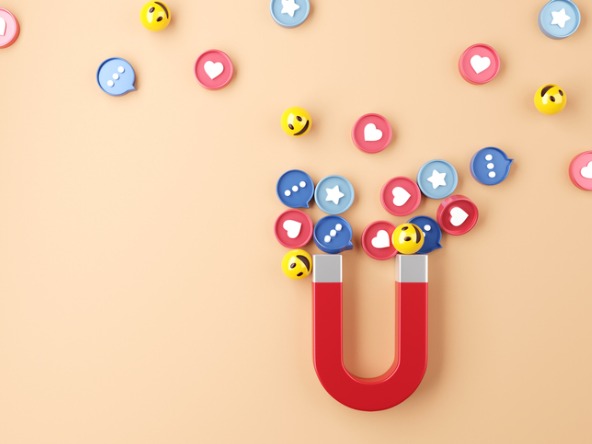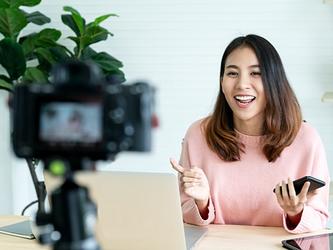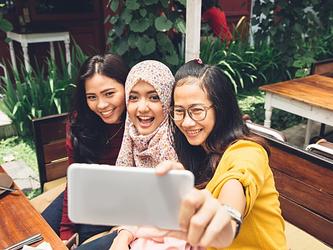Taming the ‘wild west’ of influencer marketing

Influencer marketing has seen meteoric growth over the past few years. With millions of internet users browsing social media platforms for entertainment, inspiration and product recommendations every day, it comes as no surprise that marketers have been harnessing the power of social media’s most recognisable faces, aka ‘influencers’, for promotion – anything from boosting brand visibility, widening engagement, to driving sales among their followers.
For influencers, this can be a hugely lucrative business. According to one study from February 2021 by Influencer Marketing Hub, the global marketing expenditure on influencer marketing has doubled since 2019, standing at around $13.8bn (£10.6bn) as of 2021. While the pandemic helped to accelerate this growth as more of us switched online for consumption, there’s no doubt that spending on influencer marketing is going pick up even more speed in the future, as more brands place their bets on internet stars to help their business grow.
This brings me to the topic of this article. Given that a significant amount of money and resources go into the execution of an influencer marketing campaign, it shouldn’t come as a surprise that marketers are now closely looking at the performance of these campaigns to make sure that the money spent was well worth the effort. They’ll often turn to their insight teams to help with measuring the key performance indicators (KPIs) and writing up the findings. However, my experience is that measuring the success of an influencer campaign can be tricky to say the least.
Why? Well I think there are two key challenges.
The ‘influencer’ effect
The first challenge is that traditional marketing effectiveness methods like brand lift surveys predate social media. These surveys typically involve an experimental design approach where you have a ‘test’ group who see the creative and a ‘control’ group who do not. Both groups are typically asked questions like Have you heard of [BRAND]? and Will you buy/consider [BRAND/PRODUCT] the next time you shop for [CATEGORY]?
If the test group responds more positively than the control group, a simple inference is made that this is related to the creative and that there is been an increase in ‘brand lift’. Put simply, this is the percentage point difference between the exposed and control group positive responses. If 70% of the test group report they are very likely to recommend the brand or product to a friend, compared with 50% of the control group, then the absolute lift would be 70%-50% = 30%.
Now attributing this increase to the creative might sound crude and there is a large body of research debating the relative merits of traditional brand lift surveys, so that’s a topic in its own right. My point here is whether a research design that was based on measuring the effect of seeing an advert in a magazine or on television makes sense when we’re looking at the effect of an influencer via someone’s Instagram feed. That feels like something entirely different to me.
For example, are their followers more likely to provide positive responses to the brand after seeing the advert because the brand has been directly endorsed by the influencer and they don’t want to look like their letting their favourite vlogger down? We are already aware of the problem of ‘social desirability’ bias in survey design, which is the tendency of survey respondents to answer questions in a manner that will be viewed favourably by others. For me, there’s a big issue with the authenticity of responses captured this way which we need to explore further.
Lack of quality assurance
This then brings me to the second problem. Marketing teams will often use specialist creator agencies to recruit influencers and put the campaign together. These same agencies will often also offer to track and measure how followers responded to the messaging of the campaign. The marketing team thinks great – a one-stop shop solution, cutting down the sometimes lengthy vendor procurement process of finding a separate survey supplier. What marketing teams might not know is that there is sometimes a complex and opaque supply chain going on whereby the creative agencies outsource elements of data gathering, like brand lift surveys, to other parties. These may be vendors you’ve never have heard of, and in my experience aren’t always adopting the quality assurance procedures we have come to expect to prevent unacceptable practices and to minimise errors in data collection.
Marketing teams need to be asking vendors when surveys get sent to followers on an Instagram or TikTok feed whether it is clear to them that their participation is entirely voluntary – that they don’t have to take part. Are they given protection around anonymity and confidentiality? They should also be asking what checks are in place to ensure the survey hasn’t been completed by vulnerable users such as children and whether the respondent is even a human and not a bot or a ‘fake’ follower, given we know these are intractable problems in social media.
As with any other type of research, we must make sure that social media research is robust and complies with correct ethical standards. The problem is this type of research has grown so fast, given the explosion in influencer marketing, that industry benchmarks haven’t been created yet. Do we therefore need a new quality framework for social media research?
Influencer marketing is now an established part of the marketing mix. I think that’s great, but at the same time we have to acknowledge that we may not be in a position yet to really quantify with confidence what we’re getting out of it.
Parves Khan is vice-president, global market and human insight, at Into University Partnerships.

We hope you enjoyed this article.
Research Live is published by MRS.
The Market Research Society (MRS) exists to promote and protect the research sector, showcasing how research delivers impact for businesses and government.
Members of MRS enjoy many benefits including tailoured policy guidance, discounts on training and conferences, and access to member-only content.
For example, there's an archive of winning case studies from over a decade of MRS Awards.
Find out more about the benefits of joining MRS here.













0 Comments